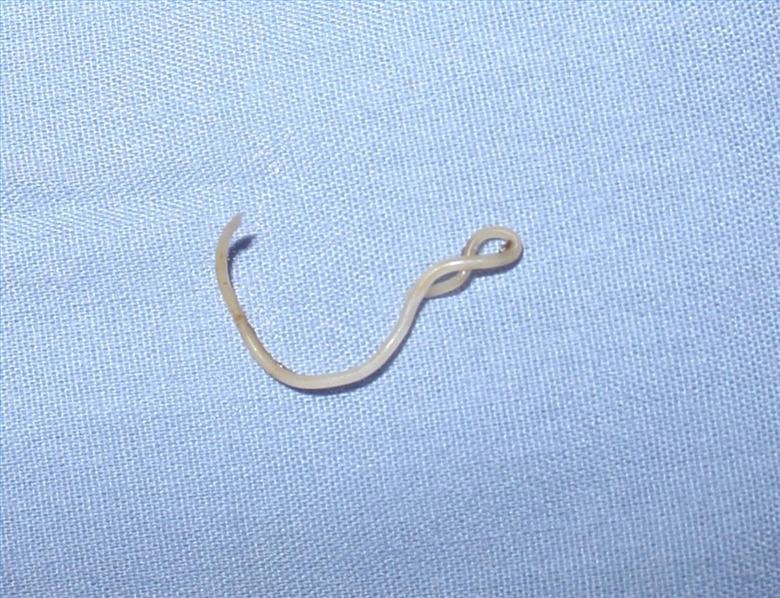How Do Roundworms Reproduce?
Roundworms, also called nematodes, are a type of worm in the phylum Nematoda. There are a wide variety of specific roundworm species, but they can be difficult to distinguish by someone who is untrained since they are so similar to each other.
You can find roundworms in almost every ecosystem on Earth ranging from marine biomes to freshwater biomes to polar tundra regions. Many species of roundworm are parasitic.
Roundworms are a type of animal, which means they reproduce sexually. The nematodes' reproduction and life cycle often involves other organisms since many species are parasitic.
General Roundworm Information
General Roundworm Information
Roundworms are eukaryotic organisms in the kingdom Animalia. They're closely related to other worm phyla and genera like flatworms, but their tubular digestive system with openings at both ends separates them from these other worm types.
Within the Nematoda phylum, there are an estimated 2,271 genera of roundworm that includes more than 80,000 known species. Scientists estimate that there could be half a million more undiscovered species out there.
Depending on the species, these worms can range in length from 1 millimeter to a whopping 23 feet long. Roundworms can be parasitic or free-living.
Nematodes Reproduction and Life Cycle
Nematodes Reproduction and Life Cycle
To keep it simple, this article will focus on the life cycle and reproduction of Ascaris worms since those are the ones that most commonly affect humans. However, this life and reproductive cycle is shared by many species and genera of roundworm.
Eggs Produced
Adult Ascaris worms live in the lumen of the intestinal tract. These worms usually enter the body after food is not washed properly, after people with unwashed hands handle food products or from humans living in unhygienic conditions.
These adult female worms have their eggs fertilized by male worms inside the host organism's intestines. They can produce more than 250,000 eggs every day! These eggs then exit the host organism through the host's feces.
Eggs Become Infective
The eggs embryonate after a couple of weeks. At this point, they're considered infective and can then infect their host organism. The eggs are consumed by the host (usually by accident after food or water has been contaminated) where the larvae then hatch inside the intestinal mucus membrane.
Larvae Mature
The larvae are then able to enter the circulatory system, where they eventually enter the lungs for about 10 days. After developing further, they climb up the throat where they are then swallowed into the digestive tract.
This is where they find their way to the intestinal lumen. It's here where they grow into mature adult worms and the reproductive process and life cycle begins again.
Ascaris Worm Information
Ascaris Worm Information
Ascaris is one of the more than 200 genera of roundworm that humans come into contact with the most. Ascaris worms are parasitic and are the leading cause of parasitic infection in dogs and cats. They can also infect other animals such as farm livestock and, in rare cases, humans.
Ascaris lumbricoides is the main species that can infect humans. Ascaris suum, a species that mainly infects pigs and other livestock, can also sometimes infect humans. These infections may lead to no symptoms at first, but they can quickly escalate at any point in the worm life cycle.
As the number of worms increase inside the intestinal tract, humans can experience malnourishment and abdominal pain. The worms can also lead to abdominal/intestinal blockages.
They can also travel to various parts of the body besides the intestines, which can lead to dangerous symptoms and consequences.
Some examples of complications for Ascaris infection include:
- Pneumonia symptoms
- Nausea
- Vomiting
- Weight loss
- Abdominal blockages
- Blockages in liver/pancreas
- Intestinal perforation
- Slow/delayed growth (often seen in infected children)
Cite This Article
MLA
Walsh, Elliot. "How Do Roundworms Reproduce?" sciencing.com, https://www.sciencing.com/do-roundworms-reproduce-5394513/. 8 July 2019.
APA
Walsh, Elliot. (2019, July 8). How Do Roundworms Reproduce?. sciencing.com. Retrieved from https://www.sciencing.com/do-roundworms-reproduce-5394513/
Chicago
Walsh, Elliot. How Do Roundworms Reproduce? last modified March 24, 2022. https://www.sciencing.com/do-roundworms-reproduce-5394513/
